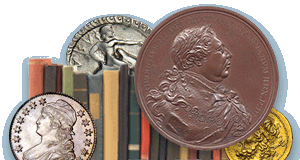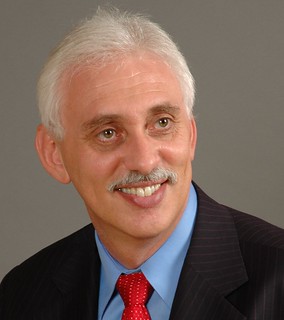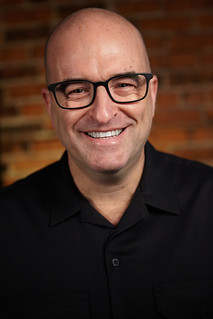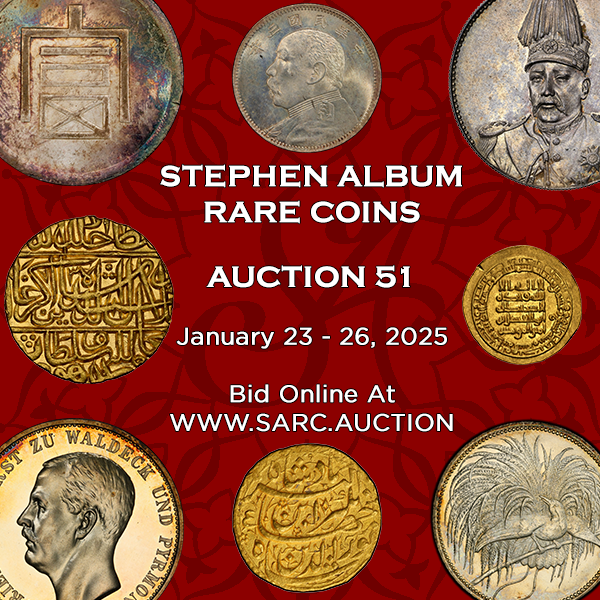
PREV ARTICLE
NEXT ARTICLE
FULL ISSUE
PREV FULL ISSUE
GERRY FORTIN INTERVIEW, PART THREEGreg Bennick's latest interview for the Newman Numismatic Portal is with Liberty Seated dime expert Gerry Fortin. Here's the third part, where Fortin talks about focusing on Seated dime die varieties and the career developments that allowed him to level up his Seated dime collection. Be sure to check out Gerry's upcoming auction of his world class Seated dime collection at www.seateddimevarieties.com. -Garrett GREG BENNICK: So eventually your set became something majestic, and would it be possible to talk about that, or have we missed a step on the way to majestic?
And let's skip ahead to 1997. So, 10 years later, the Portland people had not assimilated well in National, because National was west coast based, and there's different philosophies, work ethics, and so on. So, we never really merged. And in ‘97, I'm trying to remember who the CEO of National was, but he had this brilliant idea he was going to challenge Intel on microprocessors. And he needed about $350 million to launch that initiative. So, he approached our divisional president in Portland said, "Do you want to buy a piece of the company and turn it back into Fairchild?" And...the gentleman's name was Kirk Pond. My boss at the time was a German named, Loren Schmidt. And I was running test operations in Malaysia and the United States and responsible for all the yields and productivity for the product lines that were located in Portland, Maine. So, I said, sure, I'm going to go with Fairchild. I'm going to go with the spin out, take the risk. My boss had just said, "You really got to come with us. You know, you're part of the main team." So, I said, "Okay, I'll do it." So when that happened, we got founder's shares. I was in the second round. We went public and those stocks became quite valuable. So, I cashed out some of it. I wish I had cashed out more at the time. You know, hindsight's 20-20. But I had a nice chunk of change. I said, "All right, I'm going to start collecting the high-end seated dimes." And that's what happened. So, starting in 1997, I was still doing varieties, but I had a new layer that I was focused on. And that was the high-end material. Because I knew what I was doing at that point. GREG BENNICK: Sure. Now, just before we get into the high-end stuff, in terms of the varieties, were there varieties that you either discovered or helped popularize or brought to the fore that maybe people who had preceded you hadn't focused on or recognized as vitally important? GERRY FORTIN: Oh, sure. I've discovered many varieties. When you say discovered, it's really, you're the first one to publish it. Let's put it that way. Other people have probably seen it, but they've never said anything. So, my role was to just...I was publishing a lot in the Gobrecht Journal, which was, you know, of the Liberty Seated Collectors Club. And as I found stuff, I would just write articles and send pictures and just continue to raise the awareness of how exciting this series was. And then in 2004, that's when I published the book on Liberty Seated Dimes, but it was not a traditional paper book. It was a web book. It was an internet-based book. I was the first person in numismatics to go digital with a book of this importance, because I could understand the convergence of technology into handheld devices. I could see this coming. GREG BENNICK: This is one of those parallels, again, between your two worlds. GERRY FORTIN: Right, another parallel! So, I remember announcing to the Liberty Seated Collector's Club in one of our annual meetings that it was just going to be digital. And they were floored. And I got people coming up and saying, "You'll leave no legacy. You have to do a hardbound book. This is the standard." And I said, "I'm sorry. I don't have time." It's so much easier for me to publish online. You know, just with a little HTML knowledge. GREG BENNICK: For sure. GERRY FORTIN: Images, you can publish online and I don't have to pay to have books printed and then run around coin shows trying to sell books. I mean, I'm just too busy of a person. So, I'm just going straight online. "And trust me, you'll love it in a few years." And that's what happened. GREG BENNICK: This is great. I love the fact that we're talking also about the Gobrecht Journal, because I made mention of my one Liberty Seated Dime error, an off-center and struck through Liberty Seated Dime. I'm writing it up for the Gobrecht Journal. It'll be my first article for the Gobrecht Journal. GERRY FORTIN: Oh, good for you. Good for you. I've got a couple of what is it? The annual Best Article Awards. GREG BENNICK: Great. GERRY FORTIN: Kamal Ahwash Awards. Yeah, I've got those. Oh, yeah. Oh, yeah. GREG BENNICK: I'm glad. I'm glad to hear that. So, okay. So then from there, your collection takes on this new level where you're doing varieties on one side. You're doing high-end on the other side. You end up with sets and pieces representing both worlds. Were there favorite coins from your collection that you've handled over the years? I know that in looking at the coins online, there's coins like the 43-O and 45-O and 60-O and 74-CC, which are extraordinary. And I'm wondering if I've missed any, or if you wanted to maybe speak to those as coins that were standouts. GERRY FORTIN: Yeah, but there's a number of standouts. So, when I was building the high-end set, I, again, being an engineer and being very methodical, I had three collecting parameters. If a coin didn't meet those three, I would not buy it. The first was full strike. There's nothing worse than having a Liberty Seated dime with a partial head or a partial wreath. I knew that the fully struck pieces were much scarcer. But you didn't have to pay a premium. It's like standing Liberty Quarters. You know, you got the full heads. You have to pay that premium. Well, back then, nobody was even thinking about full strikes. But I was focused on that. So that was number one. Number two was strict originality. Coming out of the semiconductor business, again, a parallel. When you're doing yield analysis, if you understand the process, you have to evaporate metals or sputter metals to interconnect the transistors. So, I was well-versed in metallurgy. And I understood grain structures of metals and so on and so forth. So, when I looked at a silver coin, I knew right away if it was strictly original or if it had been messed with. I could just see it. GREG BENNICK: You could see it. GERRY FORTIN: You could see it. So, my second criteria was strict originality. And thirdly was the coin pretty? A coin can be original, but it can be dark, crusty, and ugly. It had to have light toning, and it had to be just pretty. So, if a coin met those three parameters, I put it in the set. If it was missing one of the parameters, I would ignore it. Now, many collectors have bought labels and haven't paid attention to those three parameters. You know, they're building registry sets, and they're more interested in the label. And the numerical calculation of their set rating. In my case, I was, no....I'm buying the coin. GREG BENNICK: Because 67, a coin that grades 67, doesn't say anything about some of the parameters that you've just said. GERRY FORTIN: No, it doesn't. No. And some 67s are poorly struck, and they're ugly. So, I had this discriminating set of parameters, and I bought accordingly. That has proven to be one of the smartest things I've done. Because I was only buying exceptional coins. GREG BENNICK: There you go. I was going to say smartest in terms of financial return, but also in terms of quality and eye appeal to the set. So, where some of the dates, like the ones I mentioned, jump out and that's just extraordinary. GERRY FORTIN: Right. They jump out because the other thing is that I was collecting in a period of time when there were no giants in the business. I was collecting from 1995 through 2005. So, in that era, there were no very, very wealthy collectors collecting seated dimes. So, I was able to pick off the best material that hit the market in that era. And 2005, Eugene Gardner stepped in. I remember going to a New York City auction. It was the Stellar Sale, it was Queller, and he was selling part of his collection. He was going through a divorce. And Gene Gardner was there. And I was after the 1865-S in gem, from the Queller collection. Never got it because Gene was there. I soon realized in 2005, I'm done. Because Gene has stepped in, and he's got infinite money. There's no way I can compete with him. So, in 2005, I put the set away. I stopped. In 2004, I had published the variety book. So, the variety research had come a long, long way to the point that I could publish. And then there was a couple of years of crowdsourcing that once I went online with the book, a number of people used the book to identify their coins, and they found some other varieties, which helped populate, you know, the online reference. So, by 2007, my interest in Seated Dimes waned.
To watch the complete video, see:
To read the complete transcript, see:
To read the earlier E-Sylum article, see:
Wayne Homren, Editor The Numismatic Bibliomania Society is a non-profit organization promoting numismatic literature. See our web site at coinbooks.org. To submit items for publication in The E-Sylum, write to the Editor at this address: whomren@gmail.com To subscribe go to: Subscribe All Rights Reserved. NBS Home Page Contact the NBS webmaster 
|


